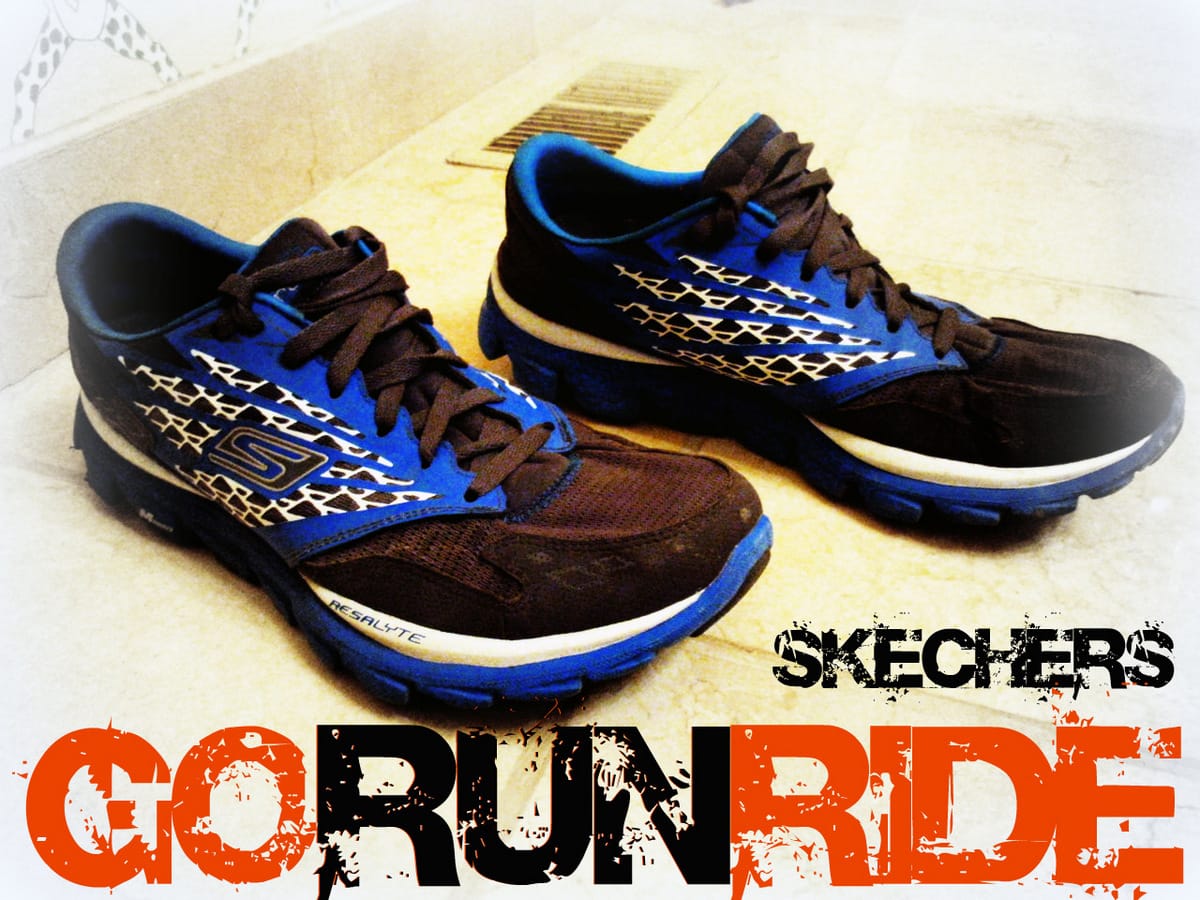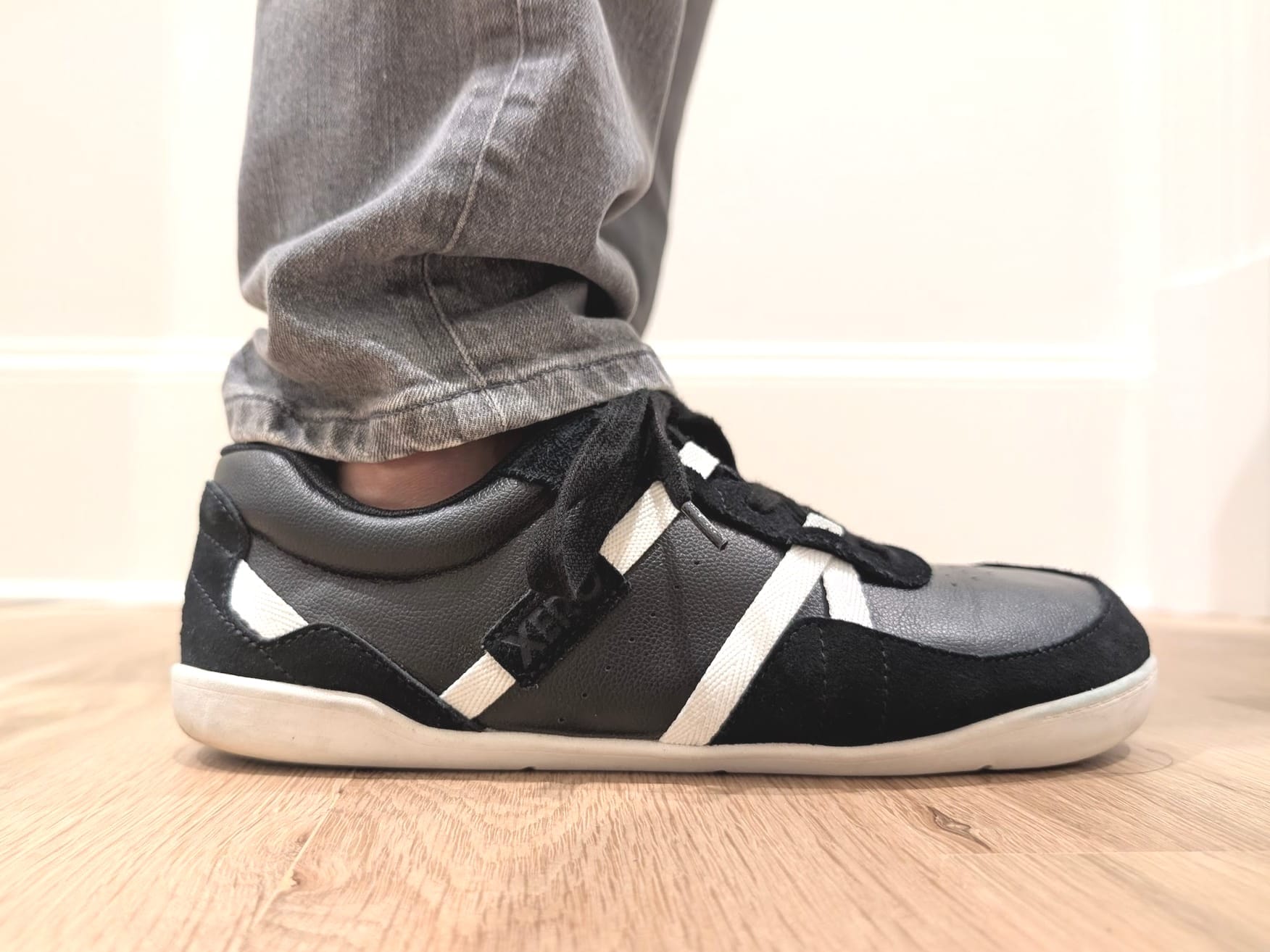Skechers GO Run Ride Review
If I had to compare the Skechers GO Run Ride™ to another shoe of my recent experience, I’d say it’s very much like the marriage between the Saucony Kinvara2™ and the Nike Free™. It’s like the Kinvara2 in terms of low heel-to-toe drop (4mm),…

Overview
If I had to compare the Skechers GO Run Ride™ to another shoe of my recent experience, I’d say it’s very much like the marriage between the Saucony Kinvara2™ and the Nike Free™. It’s like the Kinvara2 in terms of low heel-to-toe drop (4mm), feel of the cushioning and the soft sock-liner interior of the upper and like the Nike Free because it’s crazy flexible. The biggest difference between the Kinvara2 and the GO Run Ride is that the GO Run Ride has significantly more toe room than the Kinvara2 because of the use of a more anatomical last. In addition the GO Run Ride is much more flexible than the Kinvara2. In terms of weight, the GO Run Ride is slightly heavier than the Kinvara2 but not by much (~.2 oz).
After the jump a full review of the GO Run Ride from Skechers!
If you’ve tried or even seen the Skechers GO Run and were put off by the look or feel of “the bump” in the midsole don’t worry, the bump has been significantly reduced in the GO Run Ride and wasn’t even noticeable.
I found the GO Run Ride to be very comfortable either with or without socks. There was plenty of toe room for proper toe splay and the level of cushioning I felt was just right for long distance runs. The only detractors were that the upper’s heel cup volume isn’t quite enough to comfortably wear arch support insoles without feeling your heel slip and I was a bit concerned about durability of the exposed midsole-outsole compound.
Some vital statistics of the Skechers GO Run Ride:
- Weight: 7.9oz (M9), 5.9oz (W6)
- Stack Heights:
- Forefoot = 12.0mm
- Midfoot = 19.0mm
- Heel = 16.0mm
- Net Drop = 4.0mm
- Outsole = 3.0mm
The Upper
The upper of the GO Run Ride is very minimal; the material used is very lightweight and breathable. The interior is very soft and plush using an “integrated anti-microbial OrthoLite™ sockliner” which supposedly helps inhibit odor. I can attest that the shoes don’t stink overly much after much usage and I can confirm the sockliner is definitely nice for sockless running. The lacing structure is good; felt like my foot was for the most part pretty secure in the shoe. Perhaps a more asymmetrical lacing structure would help improve the overall feel. What stands out in the GO Run Ride is the very roomy forefoot that has tons of space for proper toe splay. The only real complaint I have with regards to the upper is that the net volume isn’t quite deep enough for an orthotic. While my test pair did okay with the Montrail Enduro Soles™ and even better with my Superfeet Black Insoles™ (very thin) I still felt like I wanted the heel cup to be a bit higher. It was hard to tell because the heel cup is so very thin and non-supportive but at times it felt like my heel was slipping, especially on steep downhills.
The Midsole
The midsole of the GO Run Ride, like the GO Run, uses Resalyte™ which is a very lightweight, injection-molded compound with memory retention. In my experience the midsole felt very cushy yet not overly so but definitely not as firm as some of the shoes I’ve reviewed recently (Further reading: Altra Instinct, Altra Provision, Altra Lone Peak). While midfoot “bump”, properly known as M-strike technology™, is far reduced in the GO Run Ride compared to the original GO Run, the GO Run Ride still does have a slightly curved bottom that is supposed to promote more of a mid-foot strike zone and more fluid stride according to Skechers. The curve is hardly noticeable on use; from the heel which is 16.0 mm thick the curve peaks at 19.0 mm thickness at the midfoot and then tapers off to 12.0 mm thick at the forefoot. The end result is that this shoe only has 4mm of drop from heel to forefoot.
The Outsole
The GO Run Ride uses more of a hybrid or combined midsole-outsole in that most of the surface area that makes contact with the ground is the Resalyte compound (in the shape of pillars) with the exception of several GOimpulse sensors™ or pillars of a high-friction compound that are linked at the strike points for added stability and control according to Skechers. Skechers also says that the GOimpulse sensors are independent circular sensors that are supposed to deliver feedback for an interactive running experience. In reality the GOimpulse sensors are sections of a high-friction compound to help reduce shoe wear at the impact points of the shoe (mid to forefoot area). The combined midsole-outsole, despite the thickness, is extremely flexible; I can easily flex the toe of the shoe to the heel and twist it like I’m wringing out a wet towel without any trouble. The pillared lugs of the shoe seemed to be spaced out enough that I only had occasional issues with collecting gravel or other road debris (a common problem I’ve had with the Nike Free line) and even then only after running several miles on gravel roads.
Function
As of this review I have tested the Skechers GO Run Ride running over 100 miles on mostly paved and gravel roads and paths with some short trail sections thrown in for good measure. My longest run was 23+ miles that included pavement, gravel, bushwhacking and a 5km hilly cross-country race on uneven grass and pavement in the middle (in which I placed 2nd overall)!
On pavement this shoe, as designed, functioned very well. I thought it had plenty of traction on wet and dry pavement and concrete and it actually faired surprisingly well on grass even though that wasn’t the intended use of the shoe! However, I was concerned that the Resalyte only parts of the outsole will quickly wear down; not too sure what the life expectancy of this shoe will be. I did notice significant wear in the heel and forefoot Resaylte areas from testing.
The overall cushioning felt much like the Saucony Kinvara2, not too firm but not “marshmallowy” either; about what I prefer in a long distance running shoe. This shoe is very flexible despite its thickness which makes running smoothly and silently a breeze.
The uppers being very thin and minimal did a perfectly good job of holding my foot in place on the roads but the few occasions when I encountered mixed terrain (like the uneven grass I raced in) or very steep down hills on the roads I could feel my foot rolling around inside the upper quite a bit; almost came out the shoe a couple times! Part of this I attribute to using a test pair of shoes that is technically ½ a size too large but I also had the same issue when I eventually tested a pair in my correct shoe size. Mostly I attribute the foot slippage issue to the very thin, minimally structured and non-supportive upper and the fact that the heel cup isn’t quite deep enough to accommodate even my very thin arch support insoles.
Conclusion
I really like this shoe and think it has some amazing potential. It’s a pretty darned good shoe as is but with a few tweaks I’m sure it will only get better. My main recommendations are:
- More volume in the upper to accommodate arch support insoles.
- A more asymmetric lacing system would probably aid in locking down the feet in the shoe and preventing lateral rolling and slippage.
- Cover more of the outsole with the GOimpulse sensors instead of selected areas to help reduce wear. While somebody running with perfect form may mostly hit the areas where there are currently sensors, for the rest of us there are significant gaps in the coverage which could lead to accelerated shoe wear. Also while this is a running shoe, there are occasions where I may be walking some distance in this shoe and heel striking quite a bit more; there is no high-friction material coverage in the heels! I think the trade off in increased weight would be well worth it if it helps prolong the life of the shoe.
If you’re a fan of the Saucony Kinvara line and lament the lack of toe room; this shoe is for you. Likewise, if you’re a fan of the Nike Free line and lament the lack of toe room and high heel-to-toe drop; this shoe is for you. If you’re a runner who is interested in a reduced drop shoe that has adequate toe room look no further.
I believe the Skechers Performance Division has come a very long way in a relatively short time toward producing some high quality and serious running shoes. I know that there will be closed minded folks out there who would find it impossible to wear a shoe made by Skechers and that is very sad. Perhaps it may take some more effort by the Skechers PR folks to help overcome the baggage of the Skechers brand name but I think they’ll get there fairly quickly if this design team is allowed to continue implementing their visions and ideas and producing products like I’ve been testing.
If you're looking to pick up the GoRun Ride, they're running about $80 off Zappos. If the Skechers Go line is of interest, you might also check out my more recent review of the Go Bionic. I'll wrap with more photos and a call for questions or comments!




